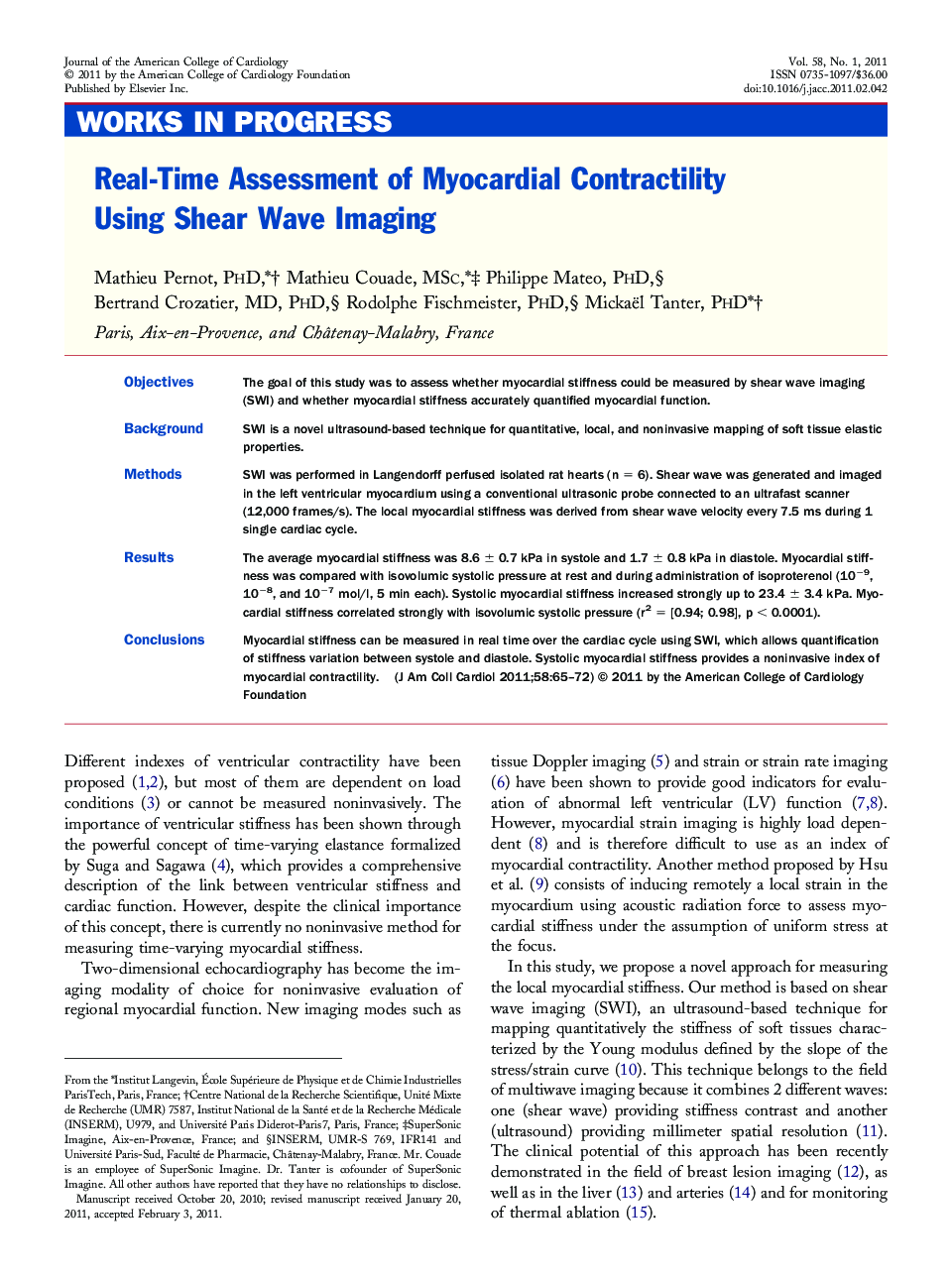| Article ID | Journal | Published Year | Pages | File Type |
|---|---|---|---|---|
| 2947847 | Journal of the American College of Cardiology | 2011 | 8 Pages |
ObjectivesThe goal of this study was to assess whether myocardial stiffness could be measured by shear wave imaging (SWI) and whether myocardial stiffness accurately quantified myocardial function.BackgroundSWI is a novel ultrasound-based technique for quantitative, local, and noninvasive mapping of soft tissue elastic properties.MethodsSWI was performed in Langendorff perfused isolated rat hearts (n = 6). Shear wave was generated and imaged in the left ventricular myocardium using a conventional ultrasonic probe connected to an ultrafast scanner (12,000 frames/s). The local myocardial stiffness was derived from shear wave velocity every 7.5 ms during 1 single cardiac cycle.ResultsThe average myocardial stiffness was 8.6 ± 0.7 kPa in systole and 1.7 ± 0.8 kPa in diastole. Myocardial stiffness was compared with isovolumic systolic pressure at rest and during administration of isoproterenol (10−9, 10−8, and 10−7 mol/l, 5 min each). Systolic myocardial stiffness increased strongly up to 23.4 ± 3.4 kPa. Myocardial stiffness correlated strongly with isovolumic systolic pressure (r2 = [0.94; 0.98], p < 0.0001).ConclusionsMyocardial stiffness can be measured in real time over the cardiac cycle using SWI, which allows quantification of stiffness variation between systole and diastole. Systolic myocardial stiffness provides a noninvasive index of myocardial contractility.
